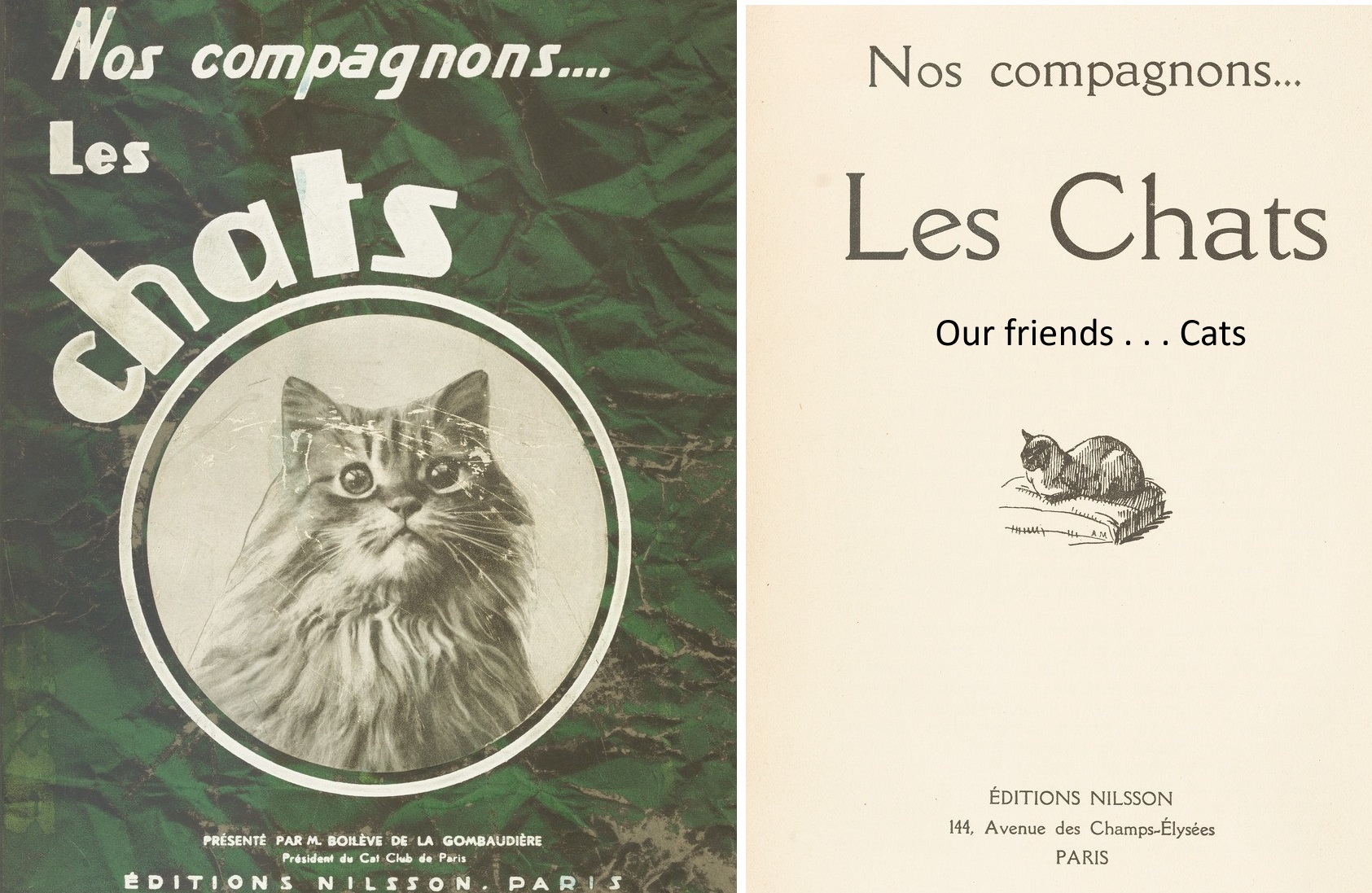
OUR COMPANIONS... CATS
NILSSON PUBLISHING

NILSSON PUBLISHING
144, Avenue des Champs-Élysées
PARIS
PREFACE
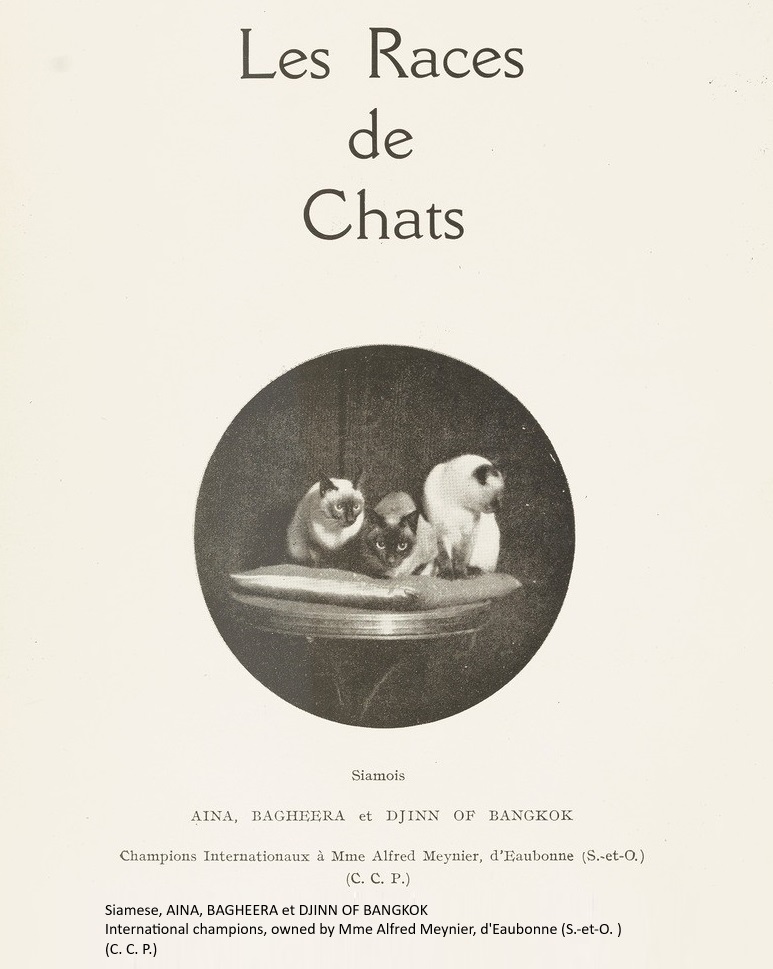
This is why we must love and admire cats: they are free beings. Let us be grateful to them, in these times of ugly servility and utilitarianism, for being independent, decorative, and useless. I know that everything has been said about "powerful and gentle" cats. After Sylvestre Bonnard's Hamilcar, after Kiki-la-Doucette, brother of Toby-Chien, after Baudelaire's cats, what more can we add? Everything has been said, for some five thousand years that there have been men, and they love cats. "You call them useless?" objects my neighbour, a stubborn bachelor. “You are very wrong. My cat is not only the companion of my solitude, he is the guardian of my house. He does not bark, nor makes a voice, and would be of no use against burglars or villains. But he defends my door against dark thoughts, melancholy, discouragement. Thanks to him, when I come home, I feel life pulsing in the lonely apartment, I find a presence, a movement, a gentle warmth, and for that I am grateful. - Useless, my cat?” my friend the writer tells me. “He sits on my desk, next to my lamp; sometimes I put down my pen and stroke him with a long stroke from his ears to his rump. My cat begins to purr, a familiar song from which I draw new inspiration. - "Useless, my Siamese cats?" my dear friend tells me. "They are agile, cuddly, and voluptuous. They are the moving ornaments of my living room, and their fur, by turns dark and light, blends with the colour of my curtains and cushions. And in the evening, they come and nestle in my arms, in the hollow of my shoulder, and I go and lay them in their basket, as I would go and kiss a little child in its bed." Thus speak all my friends, the most brilliant as well as the most humble, and each finds in his cat, purebred cat, bourgeois cat, alley cat, singular virtues and beauties.
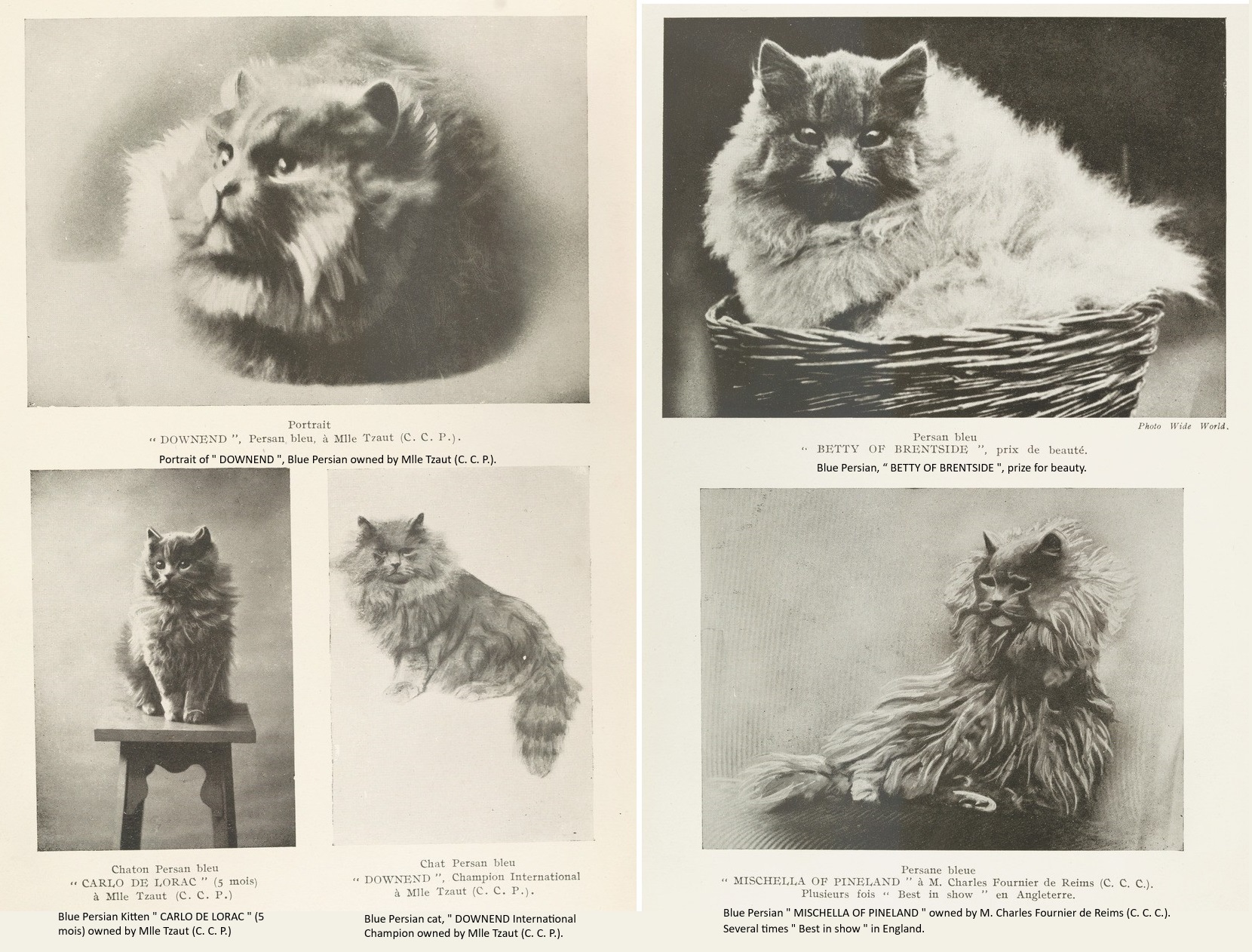
“His eyes are but two threads of gold,
And his claws are in their sheaths.”
R. B.
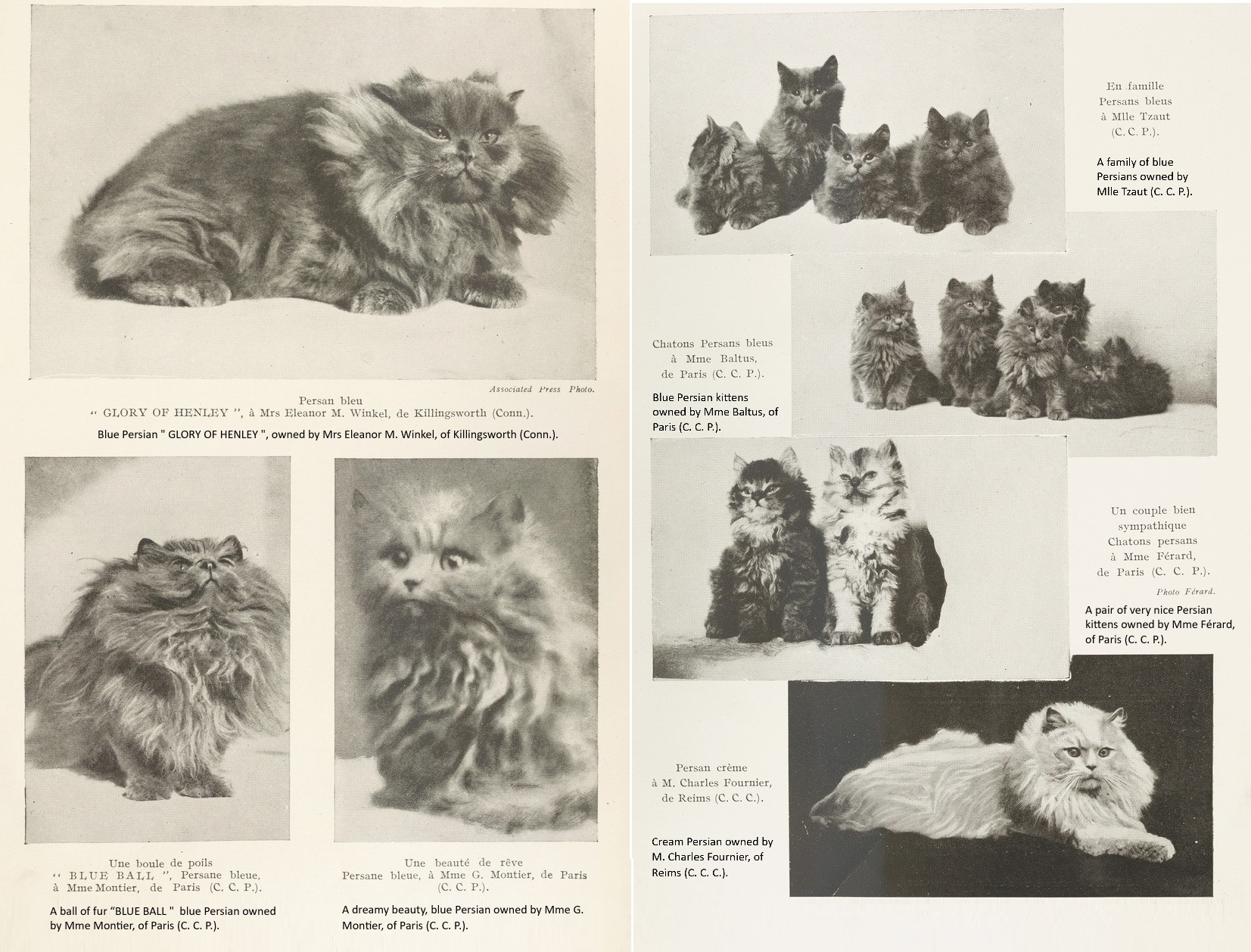
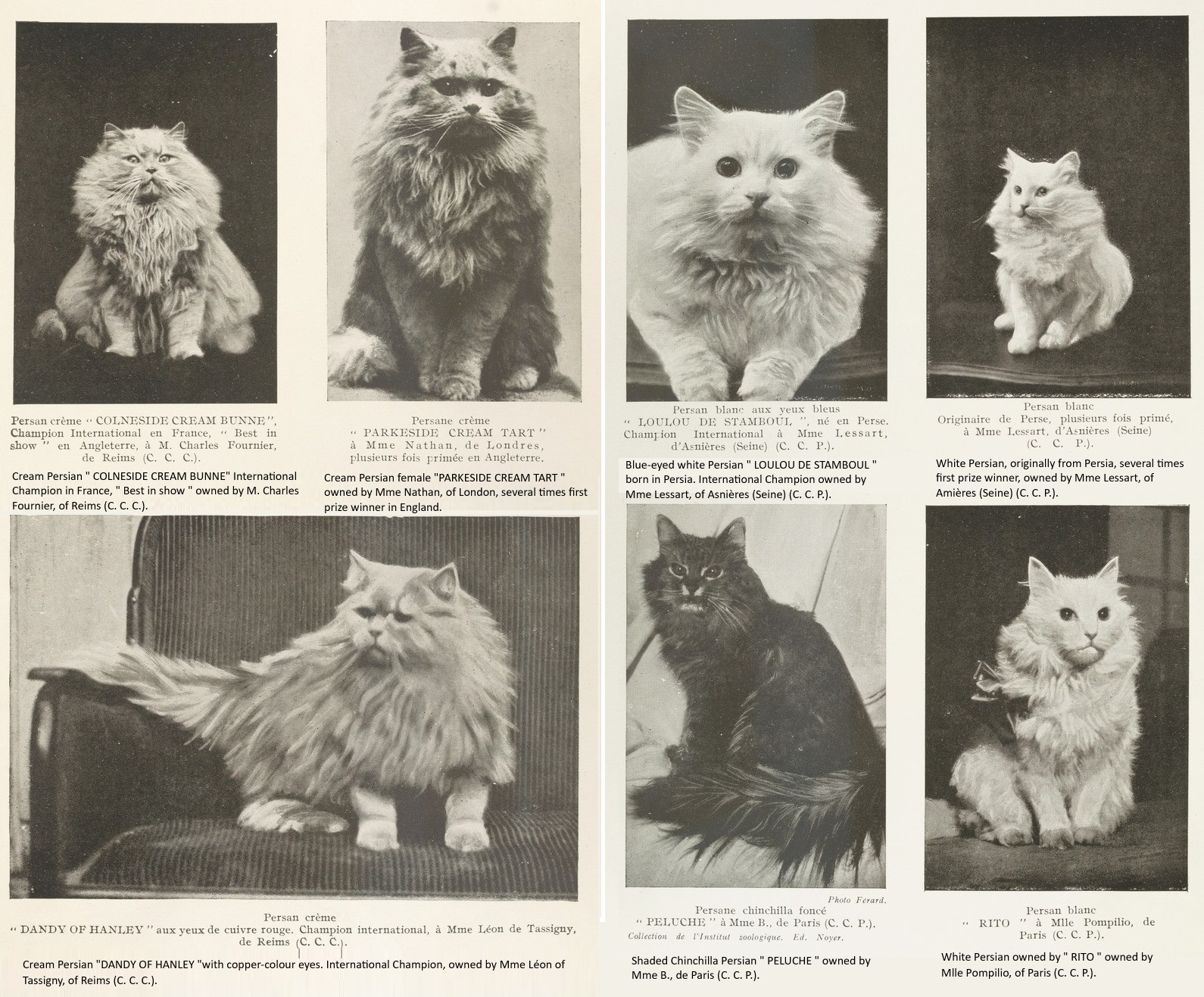
OUR COMPANIONS... CATS
Zoologically speaking, the cat is a vertebrate mammal, order Carnivora, family Carnivora, tribe Digitigrade. This small feline would seem to be sufficiently designated, and one could easily imagine, given this precise classification, that there is one type of cat, with invariable characteristics, fixed once and for all.
In reality, there are many races of cats. Undoubtedly, the general characteristics remain the same: rounded head and muzzle, upright, triangular, and fairly short ears, short, sturdy legs, a supple and slender body, an admirably flexible spine that allows it to perform marvellous acrobatics, and highly acute senses, whether sight, hearing, or taste.
But when we move from one individual to another, what differences, what prodigious variety we find: long hair, short hair, long tail, short tail, or no tail at all, prick ears, drooping ears! ... and who knows what else? And yet we intend to limit ourselves to the domestic cat. From a behavioural point of view, if one can call it that, it's even worse: no two cats are alike: each has its own individuality, character, and personality.
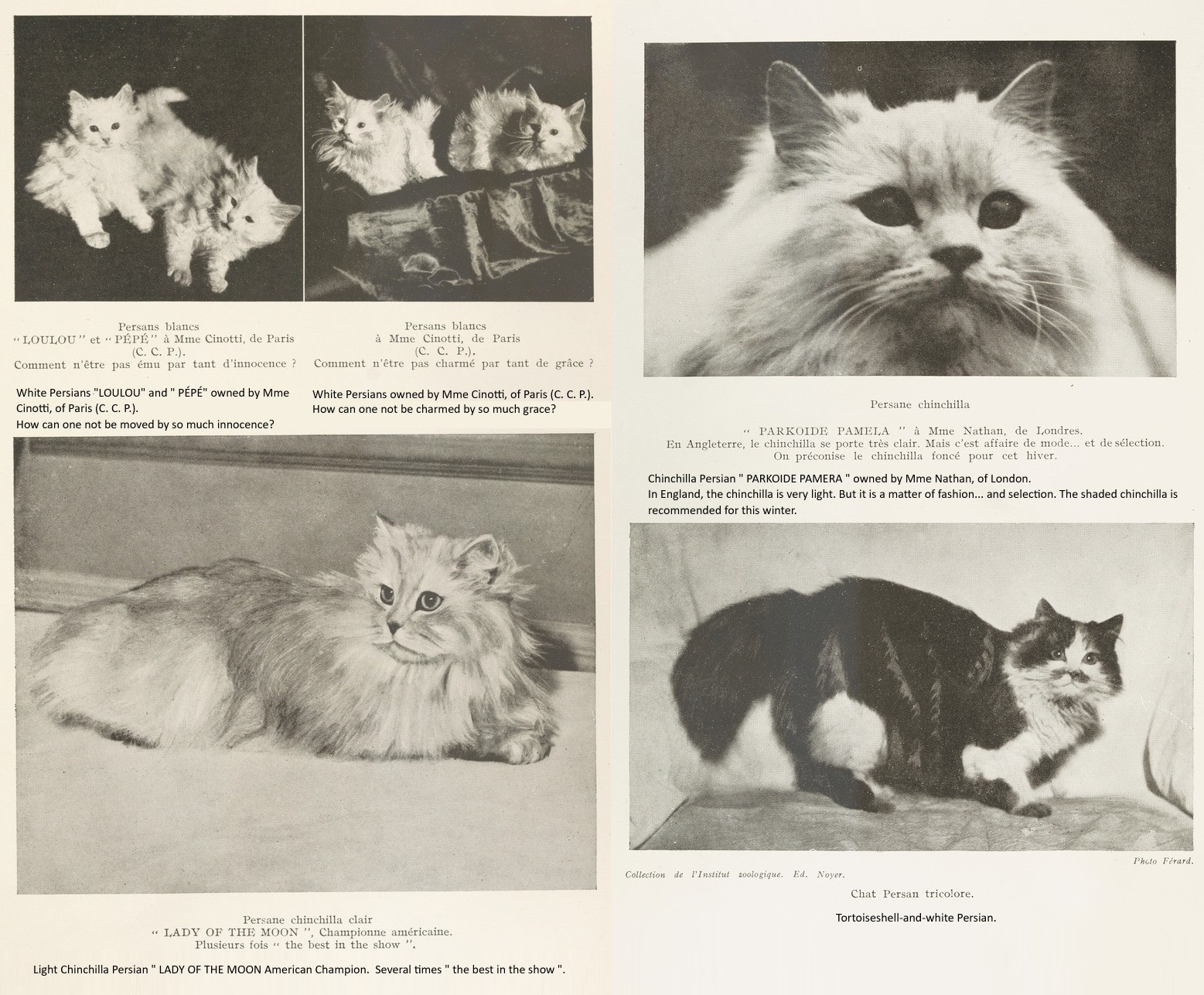
In any case, attempts have been made on several occasions to establish a rational classification of the different cat breeds. Generally, the characteristics of the ears and tail, coat colour, and hair length have been adopted as distinguishing features. In truth, the problem is not simple: as a result of crossbreeding, changes in climate, and environments, the characteristics of each breed have not only changed over the centuries, but continue to evolve today. Moreover, each year, thanks to selective breeding, new sub-breeds appear, some of which appear to be well established.
Below, we will mention only the main breeds, for which precise standards have been established. It is according to these standards that the exhibits participating in the numerous cat shows now held in all countries are examined and judged, and which are enjoying increasing public success.>/P>
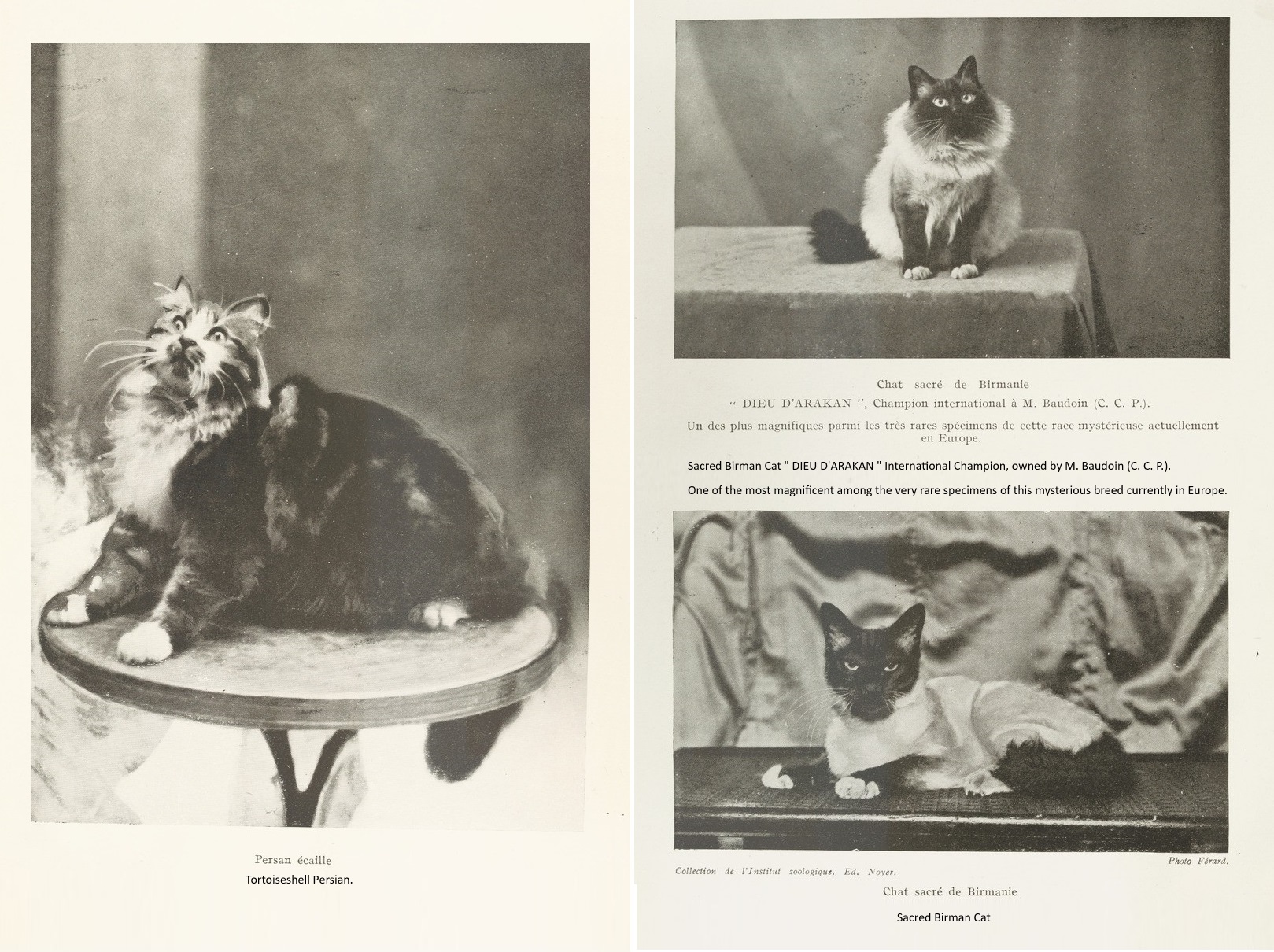
I. EUROPEAN CAT
This is our country’s common cat. There is little agreement on its origins: some believe it descends from the ancient Egyptian cat, which transformed over the centuries, perhaps through crossing with the wild cat. This is only a hypothesis. Short hair, long tail, broad head, slightly tapering towards the mouth and lips, blue, orange, or green eyes, and a wide variety of coat colours: black, white, blue, tortoiseshell, striped (tabby), speckled, chinchilla, etc. Easy to tame, intelligent, sensitive, and affectionate to those who love it, it is a charming companion; it can be very handsome and is in no way inferior, in this respect, to the specimens of the "noble" breeds we list below.
The most popular examples are the white European, the very rare red European, the spotted European, or the particularly elegant tabby, of which we will see a very successful specimen later.
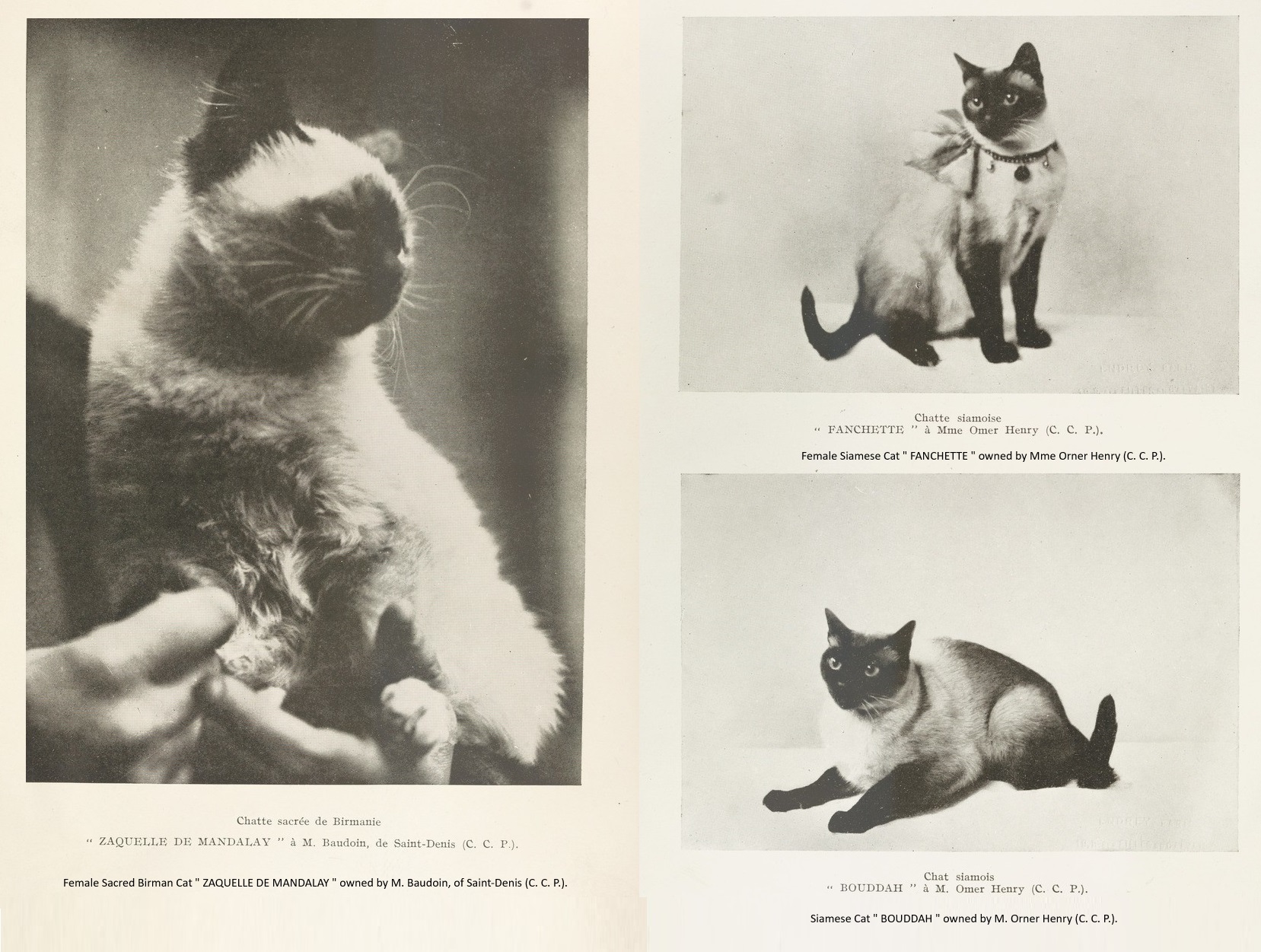
II. ABYSSINIAN CAT
Could this be the closest descendant of the divine cat of ancient Egypt? One is tempted to believe so when examining the paintings in the tombs of the Pharaohs. Elegant silhouette -somewhat reminiscent of the Siamese - small, broad, somewhat stocky head, eyes generally yellow tinged with green, large ears, grizzled coat, generally sandy or dark grey, even black, often with a brown stripe along the back; short, even, dense, glossy hair. Very gentle, shy, and reserved, it can be very affectionate towards the person who adopts it.
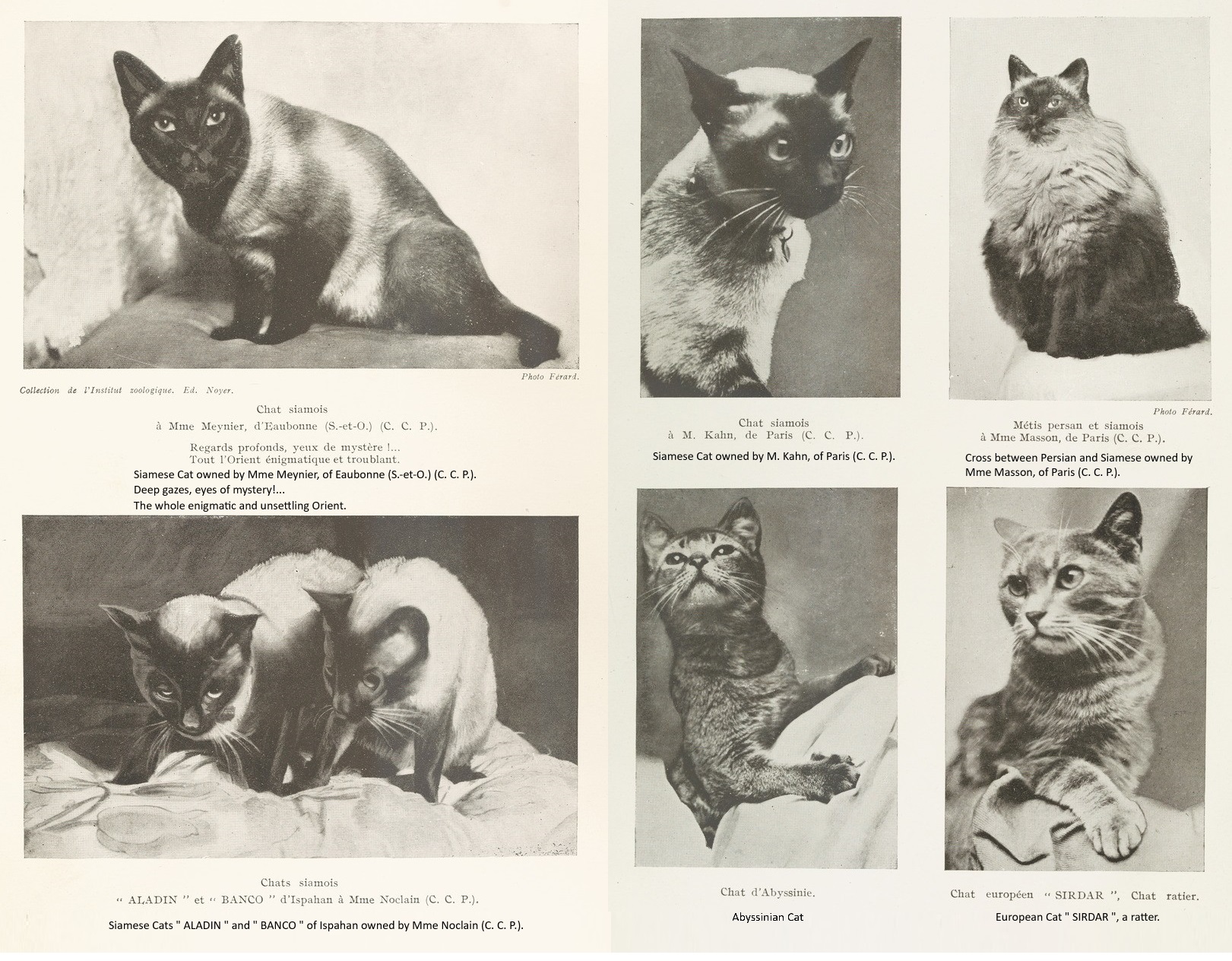
III. CHARTREUX CAT
Large in size and elegant in posture, with semi-long, woolly hair, generally solid grey with bluish highlights, strong head, short nose, small ears, yellow eyes, a good hunter, although lazy. This cat seems to have originated mainly in Russia. It is also very widespread in the United States. It is often called British Blue or Russian Blue, depending on the colour of its eyes.
IV. CAT OF BURMA
Still extremely rare in our countries, the sacred cat of Burma, raised in the mystery of Hindu temples, is a splendid animal, with a coat spun with burnished gold and a dignified attitude, as if aware of its nobility and divine character. Fairly large, with long, silky fur, it has deep, melancholy sapphire eyes and white-gloved paws with brown gaiters. Affectionate, intelligent, and cheerful, it loves its master exclusively, whose absence plunges it into sadness and thought. Its breeding is particularly difficult.
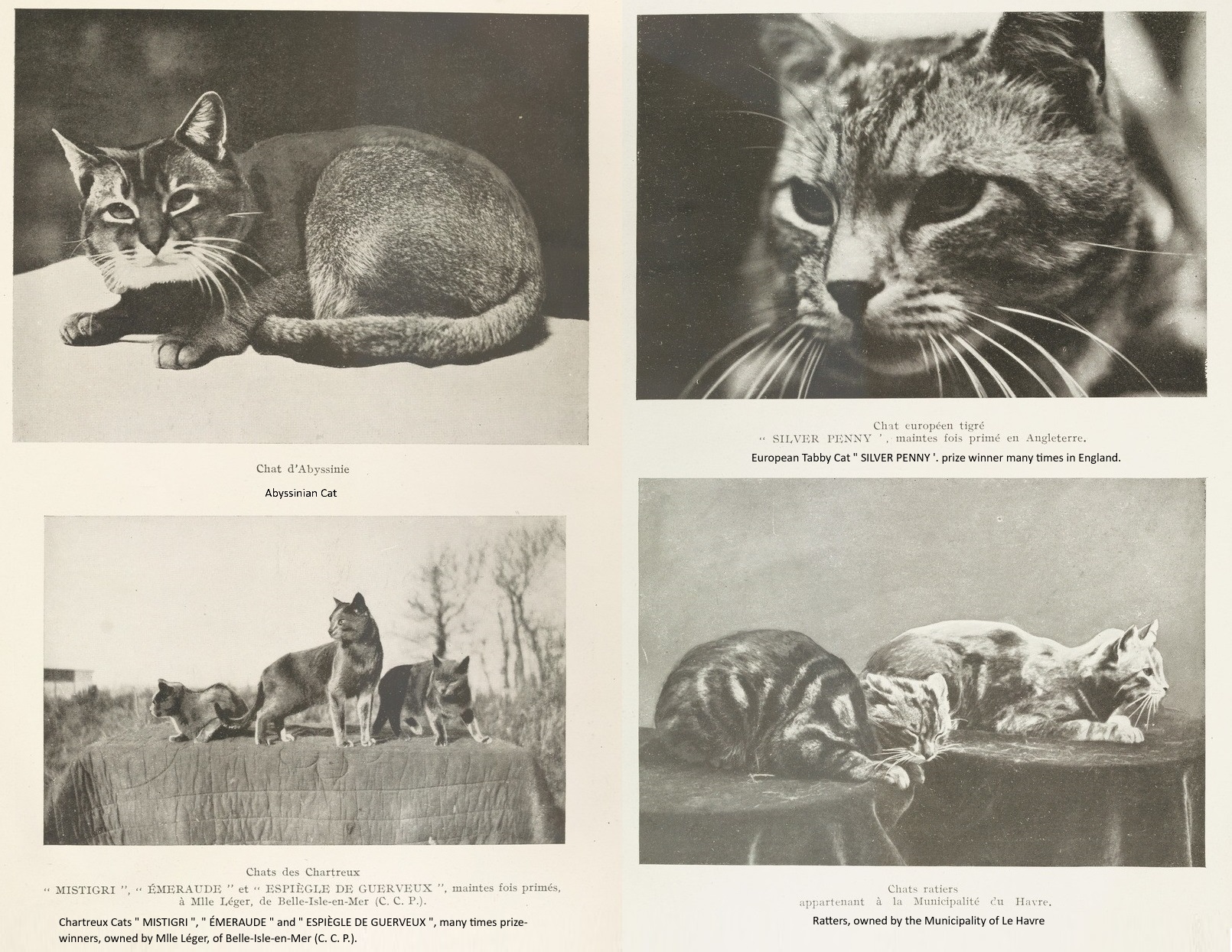
V. SIAMESE CAT
A legend, recorded in the Far East, relates that the Siamese cat is the product of a cross between the Burmese cat and the Annamite cat. This would explain the broken or knotted shape of the Siamese's short tail. In any case, this is a charming animal, remarkably intelligent (let us mention, in passing, the exceptional development of its brain), and devoted to its chosen master. It is generally smaller than our ordinary cats. The small head is slender, but elegant and graceful; within the brown mask, two exquisite blue eyes shine, full of expression, which, under the influence of irritation or fear, can have red highlights. The short tail is either straight or broken. The coat, generally light cafe-au-lait in colour, sometimes silver-grey or pale orange, with brown markings on the head, tail and four legs, is short-haired, soft and silky. A single downside is the unique cry with its strange modulations, reminiscent of the cry of the wild animal.
VI. PERSIAN CAT
Regardless of its coat colour, this cat originates from Asia Minor and Persia. Covered in long, silky fur from head to toe, adorned with a mane-like ruff framing a small but broad head with wide-set ears and a short, flattened muzzle, it has a relatively short but extremely bushy tail, which it carries like a plume. There are numerous varieties, distinguished from each other by coat colour, which varies from blue to white and black, including red, orange, cream, chinchilla, and tortoiseshell. Very gentle and sociable, it thrives in luxury, where its indolence and majesty find their place.
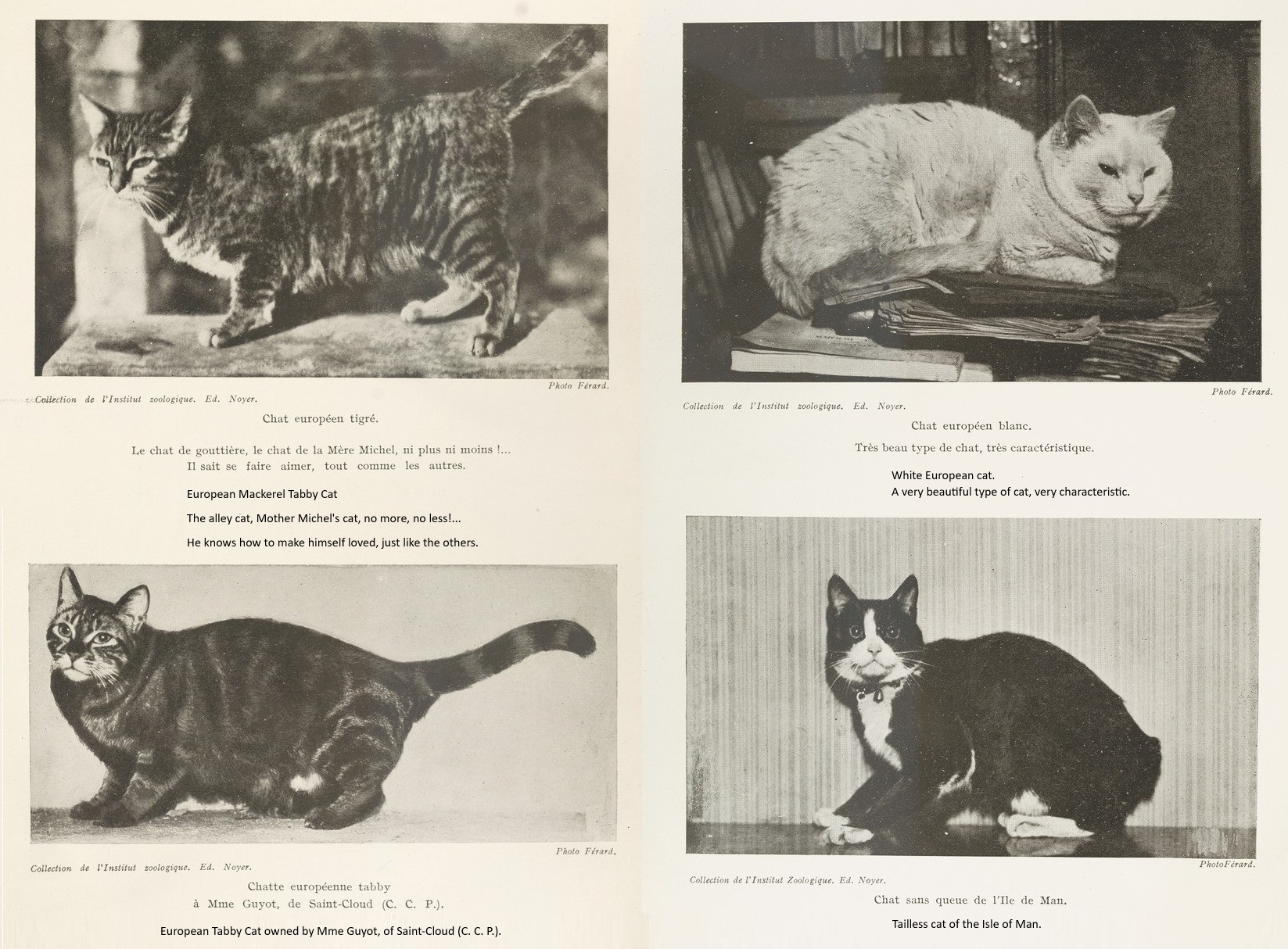
VII. TAILLESS CAT OF THE ISLE OF MAN
Although it originates from the Isle of Man, in the Irish Sea, it is likely that the true origin of this creature is the Far East. It is often found in Japanese or Chinese engravings, albeit with some differences in detail. It is a pleasant creature with a curious peculiarity: due to its build, it runs like a rabbit. Its head, broad and thin, not pointed, is adorned with two large, round eyes, whose colour varies from orange to green, depending on the colour of its coat, which is generally speckled and silvery. Its fur is semi-long, somewhat fluffy, resembling that of a rabbit.
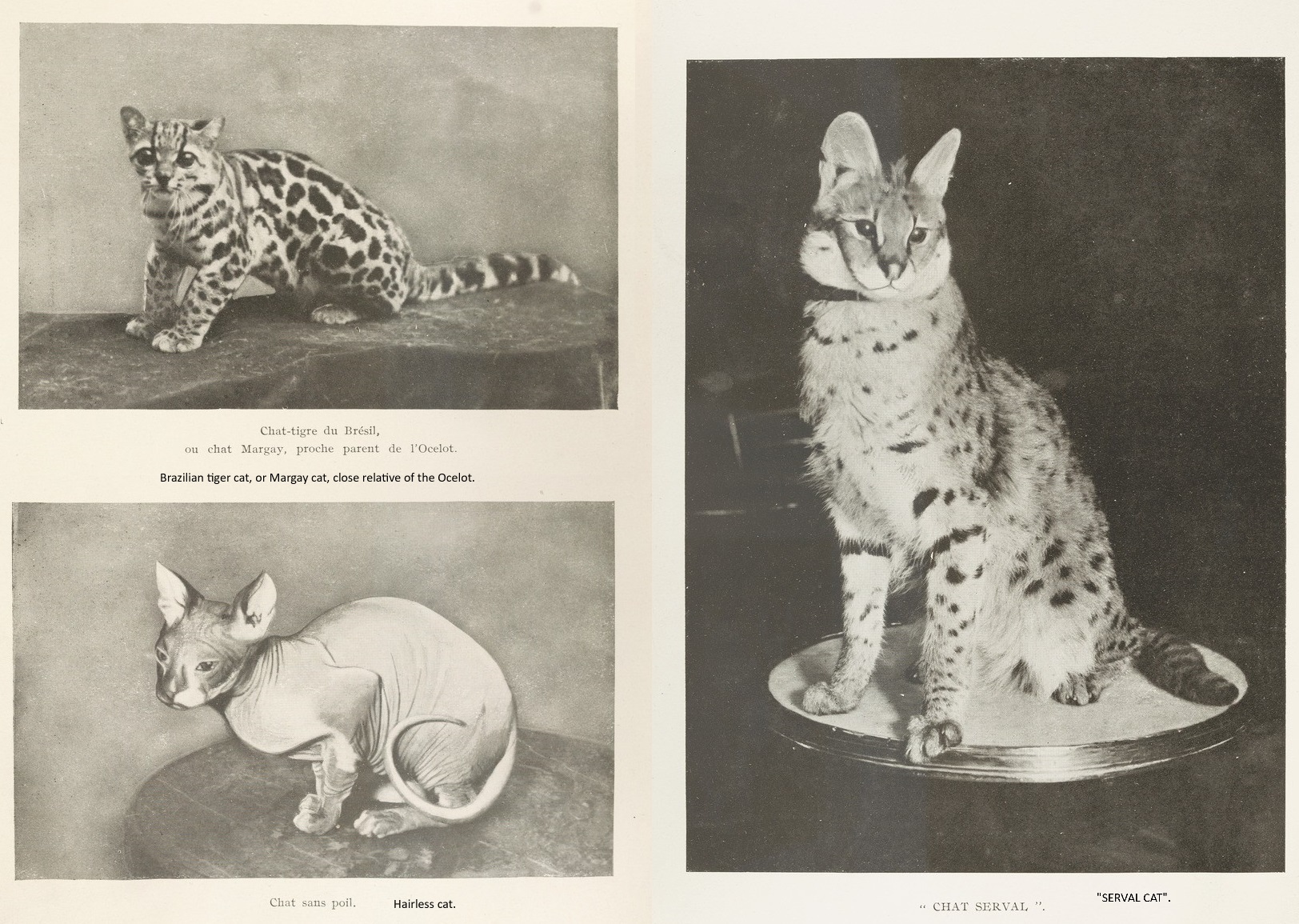
VIII. MEXICAN HAIRLESS CAT
A rarity: it is even said that the breed is extinct; perhaps there is little reason to regret this. It is an oddity with its soft, slightly wrinkled skin, bluish-brown on the back, pinkish on the belly! Hairless, except for a long, coarse moustache. All in all, it is quite similar to the hairless dogs of Manchuria
IX. BRAZILIAN CAT OR MARGAY CAT
This is probably a first cousin of the Mexican Ocelot. It is the size of a medium-sized dog, and its coat is tawny with blackish-brown spots, forming parallel stripes on its head, neck, and spine. In the wild, it lives in forests and readily lives in trees. In the domestic state, it is very gentle and affectionate, playful, and - unusually for a cat - loves water.

In the foregoing, we have deliberately limited ourselves to providing only the essential characteristics of the main breeds; the few photographs in this album will provide more information to cat lovers. Moreover, cat fanciers will find all the additional information they could desire at cat societies, in particular the Paris Cat Club.
We can only hope that this little book will develop, in those curious enough to leaf through it, the desire to get to know this gentle companion of man that is the cat.
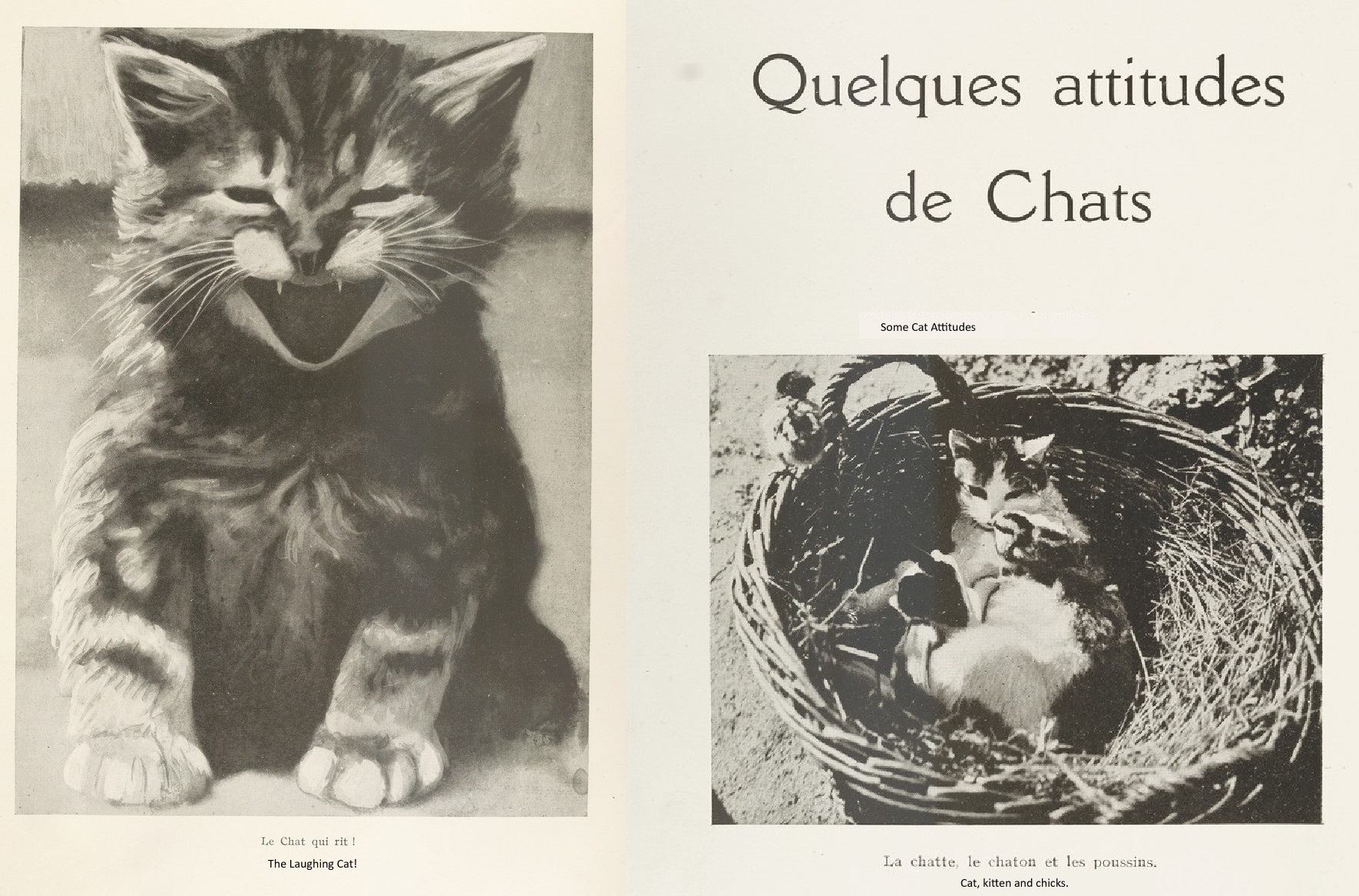
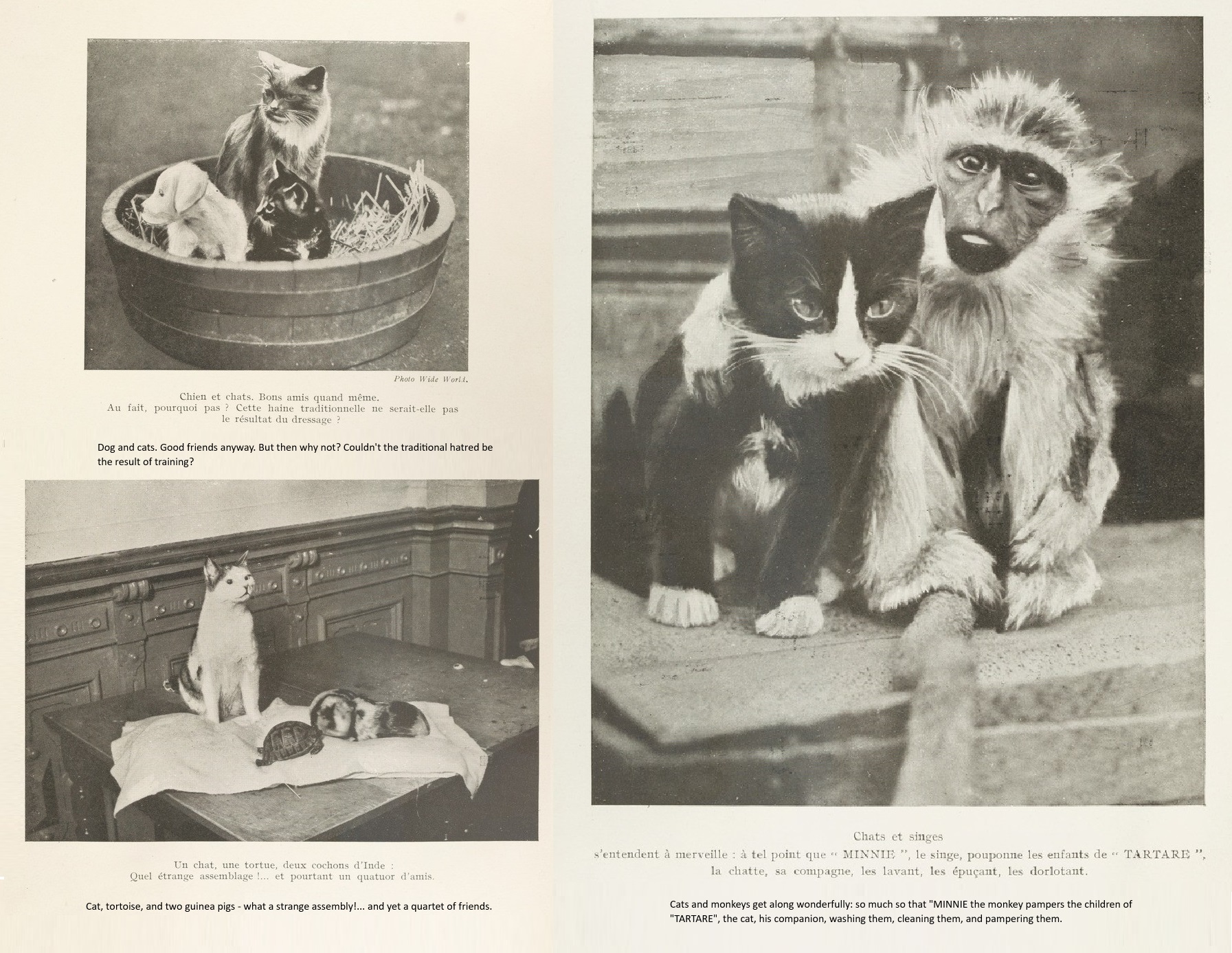
PRINTED 31 MAY 1932 ON THE PRESSES OF GEORGES LANG, 11 BIS, RUE CURIAL, PARIS.